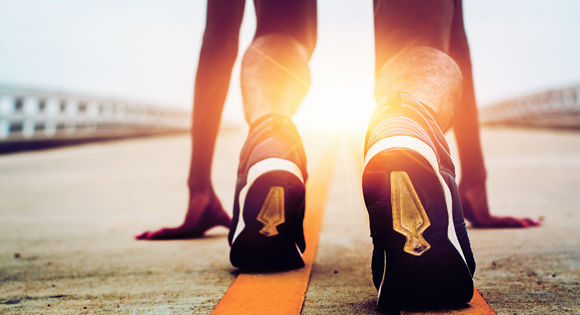Choosing a pair of running shoes is not as easy as buying a t-shirt from a shop. From the comfort to the grip, you need to run many checks before finalising a good pair of running shoes. If you have decided to jog or run for the purpose of fitness, then you have all the more reason to purchase a good pair of running shoes online.
" title="YouTube video player" frameborder="0" allow="accelerometer; autoplay; clipboard-write; encrypted-media; gyroscope; picture-in-picture; web-share" referrerpolicy="strict-origin-when-cross-origin" allowfullscreen>
Choosing a pair of running shoes is not as easy as buying a t-shirt from a shop. From the comfort to the grip, you need to run many checks before finalising a good pair of running shoes. If you have decided to jog or run for the purpose of fitness, then you have all the more reason to purchase a good pair of running shoes online.
Tick these checks before you finalise a pair of running shoes.
Upper Material
Everything above the sole of a shoe is considered the upper material, which can be a combination of fabrics and mesh, glued and sewn together. Most of the modern models are made using knitting and printing to craft a single piece upper, which is good to stretch and support. Upper material should be designed like the shape of your foot, which helps to provide a perfect grip without leaving any gap.
Outsole
The outsole is a direct contact between the track and the shoe. It is often made with a combination of rubber and foam to provide durability, grip, and comfort. The sole of a sports shoe is considered good if it is having traction control and extreme comfort without adding excess weight or stiffness to it.
Midsole
A midsole is defined as a foam material adjusted between the outsole and the upper material, designed to offer cushion and comfort to the foot. Ideally, the perfect midsole for a pair of sports and running shoes shoulde neither be too soft nor too hard.
Heel Comfort
Your ankle gets a shock when you step on your heel while running. Some of the shoes feature extra cushioned sole on its heel side to avoid rough landing of the feet. So you must check on the cushioning and gripping before purchasing a pair of running shoes.
Forefeet Comfort
We cannot skip the forefeet part of the foot, which pushes us forward while running. An optimum cushioning absorbs the shock generated at the time of landing, while forefeet cushioning offers a perfect push to the body. Try to check a perfect balance between heel and forefeet cushioning in a running shoe.
Flexes as you want
To make the shoes flex as your feet bend, many shoe brands use grooves under the sole portion of the forefeet. You must look for a shoe that flexes or bends as your feet want during your running pace.
A perfect feet box
The upper box of the shoe where the foot hides, should be stretchy and free to make space for your foot while landing. You should look for a shoe that allows your feet to move freely without rubbing much with your fingers and toes.
Landing Comfort
There should be a proper difference between your heel and the ball of your foot when standing in the shoe. Even experts agree to the fact that changing the drop of your foot distributes force differently and can cut down on your stride. Choose a shoe that makes you feel good and confident throughout the stride, from landing to the next-step-push.
Sockliner
Sockliner is a soft removable foam that your foot rests on inside a running shoe. Different companies offer different kinds of sockliners for supporting a better and comfortable run. Also referred to as “arch support”, the sockliner offers initial comfort to the foot. Do not forget that softer is not always better and the foot works dynamically according to the terrains we choose to run.
You must remember that the look of a shoe doesn’t matter if you are dedicated only to running. Your foot needs comfort, perfect landing, and a good grip while running. So whenever you are visiting a showroom or browsing a website like Asian to purchase running shoes, try to check with the above-mentioned requirements rather than sticking only to the design and look.





